Text

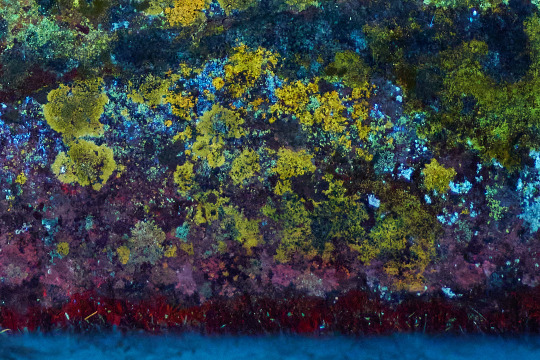
Pine tree and lichen landscape in the Sierra Nevada mountain range, photographed with UVIVF.
517 notes
·
View notes
Text

California barrel cactus (Ferrocactus cylindraceus) growing out of a granite wall in a wash in Anza Borrego, photographed with UVIVF.
38 notes
·
View notes
Text

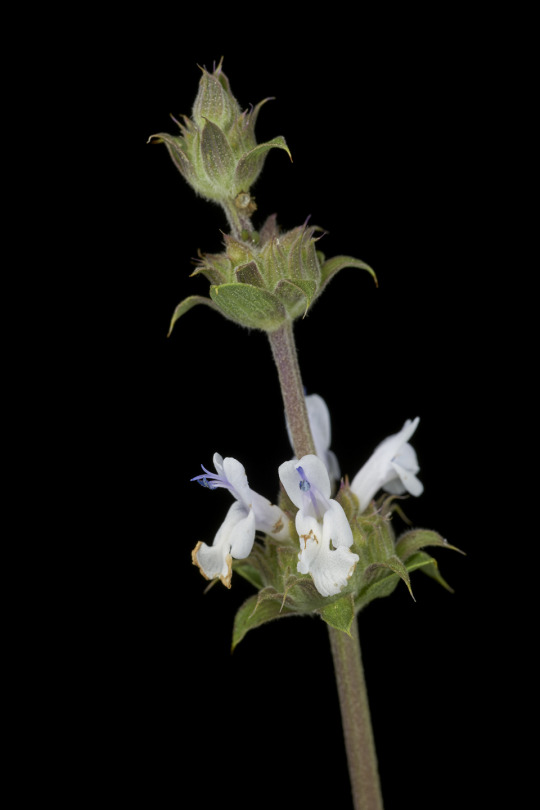
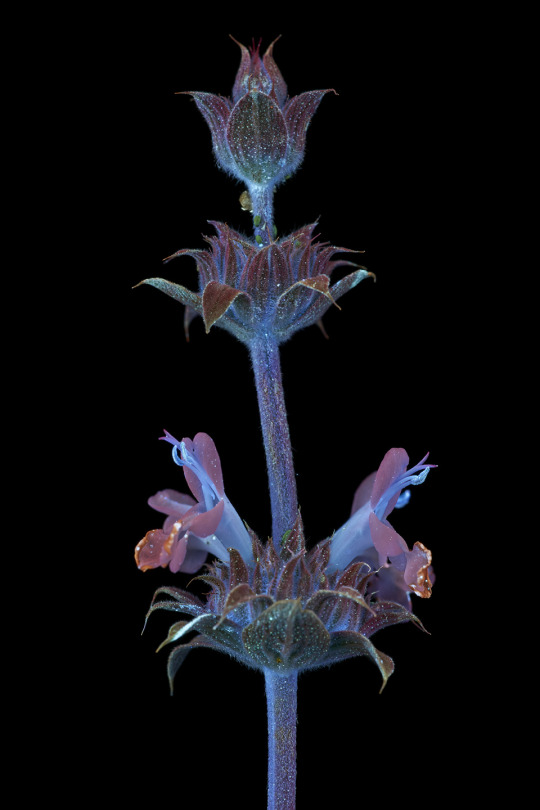
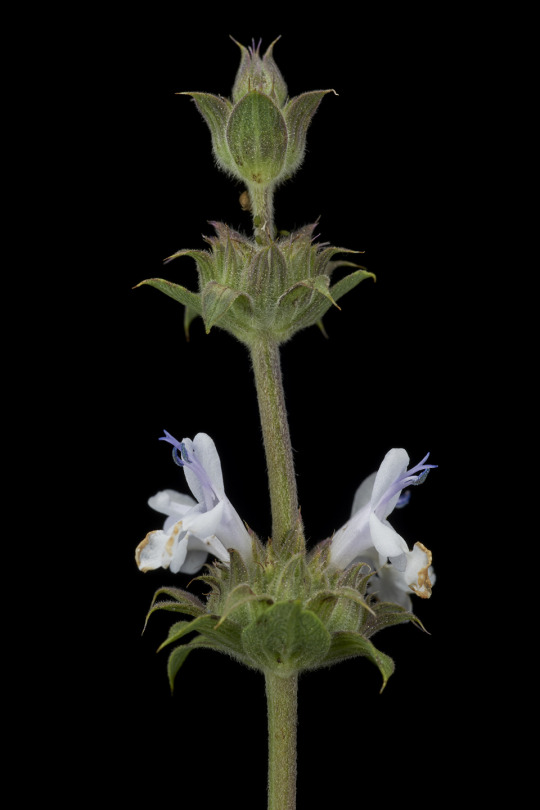

Salvia mellifera, black sage, is a perennial shrub in the mint/sage family native from central California down through the top of Baja California. It is part of the cast of plants present in coastal sage and chaparral habitat, thriving only in a specific range of rainfall in a mediterranean climate. The flowers host a variety of pollinators including butterflies, hummingbirds, and native bees and its seeds, like other Salvia species, are abundant and provide food for animals and birds. The fragrant leaves contain chemicals used by the Chumash to treat pain and a unique spicy honey is derived from the plant in the modern day.
106 notes
·
View notes
Photo
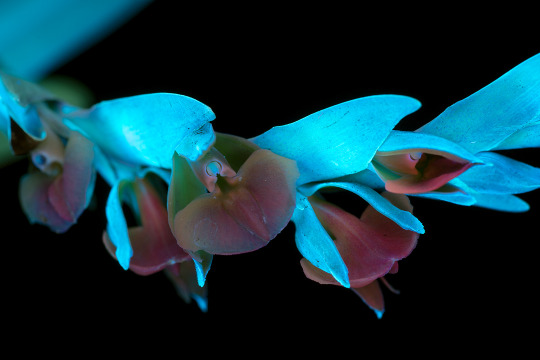


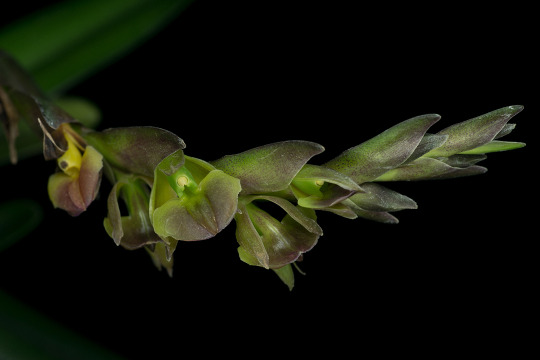
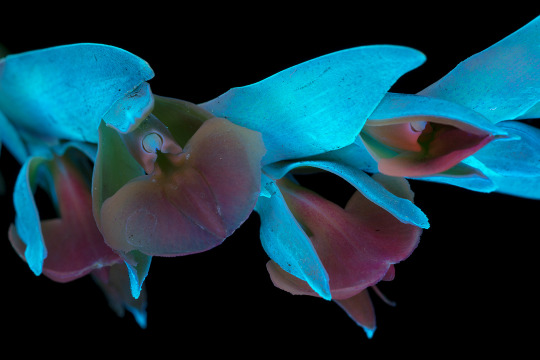
Epidendrum summerhayesii is an epiphytic orchid native to central America where it resides in cool montane forests. Among Epidendrum orchids I've seen they have unusual waxy flowers which are apparently weakly foul-scented flowers. This one only bloomed once for me as the climate I'm southern California is certainly too hot for temperate orchids even in a genus known for its durable members.
#epidendrum#orchidaceae#centralamerican#orchids#epiphytic#botanical#uvivf#glowing#luminous#fluorescent
87 notes
·
View notes
Photo

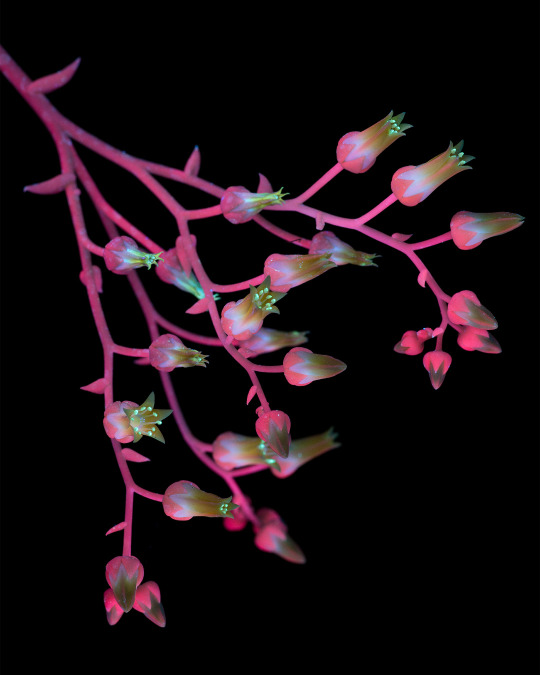
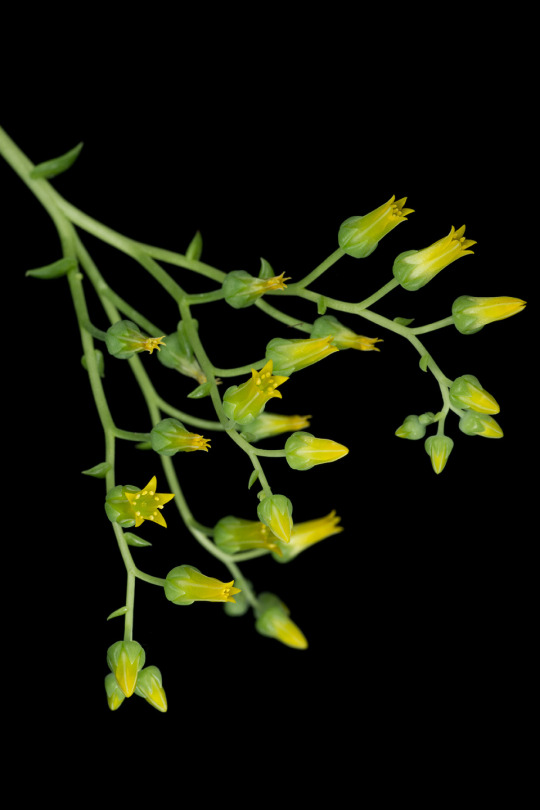



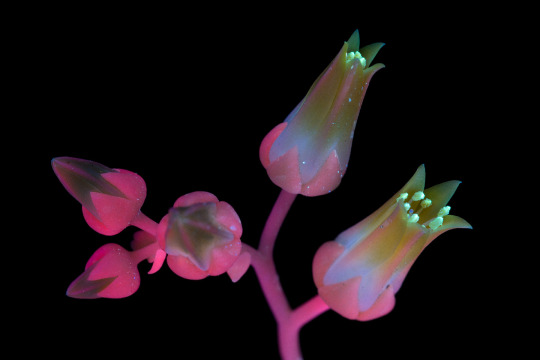
Dudleya cymosa ssp. pumila is a succulent native and endemic to California, meaning it cannot be found growing naturally anywhere else in the world. This plant is most often found on north-facing canyon walls and roadcuts throughout the transverse ranges (a series of mountains that run east-west through CA instead of the usual north-south.) Dudleya in general have special adaptations which allow them to survive challenging environments, in this case growing in the wet but coldest part of the year and surviving a long, very hot, and very dry summer.
Even in this subspecies there are many included forms, with varying traits such as flower color, leaf farina, altitude, etc., which goes in hand with Dudleya being a genus of complicated and still-developing taxonomy with quite a lot of undescribed species. Molecular phylogeny is making this possible by sampling genetic material to determine evolutionary relationships. This process is further complicated by the fact that Dudleya is a highly poached genus and many populations of unique plants are threatened by sprawling human development and introduced herbivores before they even have a chance to be recognized.
Dudleya is one of my favorite genera of plants, so expect to see more of them in my posts in the future!
296 notes
·
View notes
Photo
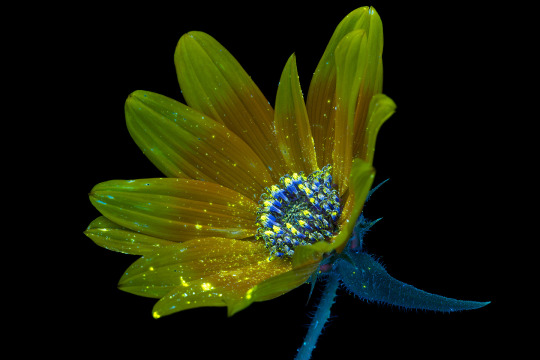
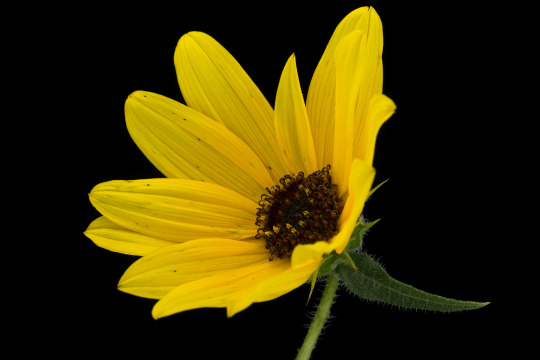


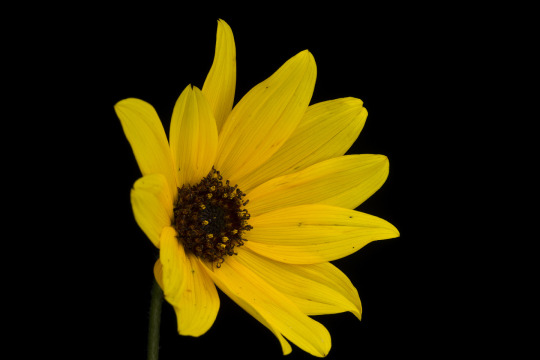


Helianthus gracilentus, the Slender Sunflower, is a perennial sunflower native to southern California and Baja California mostly in semi-coastal chaparral and light pine forests. Where the more commonly seen Helianthus annuus only lasts through one good growing season, H. gracilentus persists indefinitely with woody stems instead of pith-filled stems which allow the annual sunflower to grow quickly and last just long enough to set seed and die. Where the annual sunflower has many cultivars ranging from ones with multi-kilogram heads to branched habits producing many smaller flowers in a season, H. gracilentus can produce blooms for most of the year in gentle climates, only needing a break in the coldest months of the year and persisting through a hot, dry summer through the aid of a stout taproot.
#canativeplants#californiaflora#flora#calflora#CNPS#helianthus#sunflower#uvivf#glowing#composite#flowers#fluorescence#neon#glowingflowers
129 notes
·
View notes
Photo

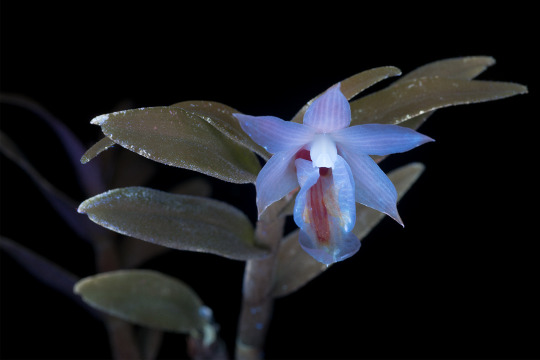
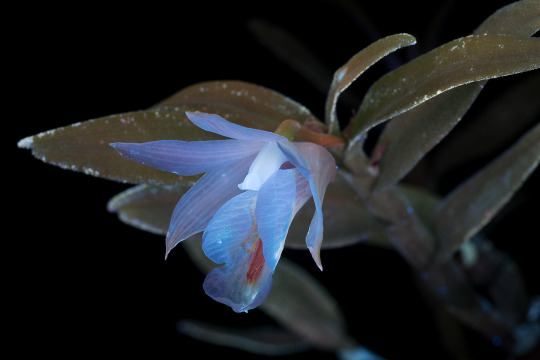
Dendrobium bellatulum is an orchid from low to moderate altitude mountain forests in southern Asia. It is an epiphyte with cane pseudobulbs and the flowers which emerge from leaf nodes on leafless stems are known to be fragrant.
3K notes
·
View notes
Photo
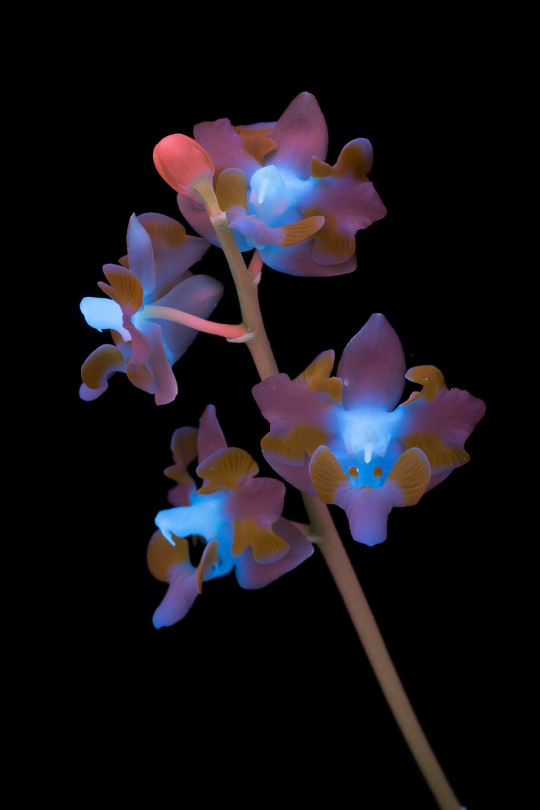

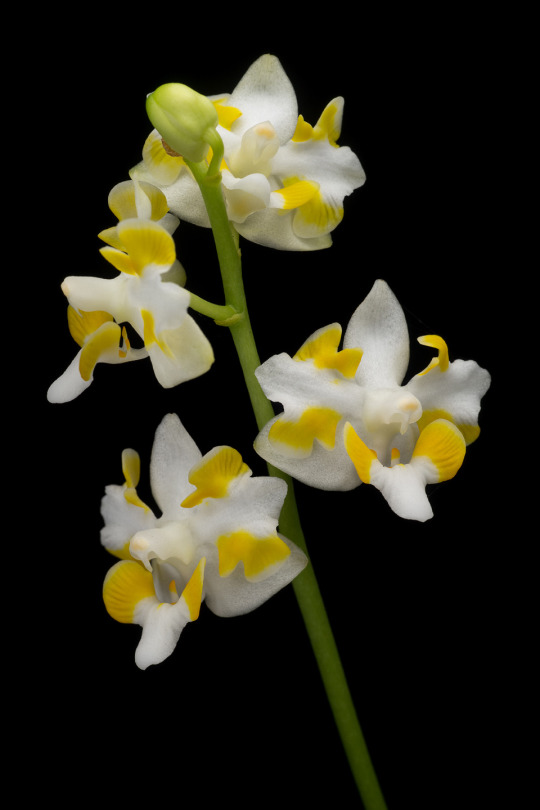

Phalaenopsis pulcherrima var. champorensis is a variety of a species of orchid native Hainan Island south of China through the Malesian region where it occurs on several islands and countries. The typical form has pink-purple flowers and uses deception to ensure pollination since it offers no rewards. The form shown here which is most common in cultivation has altered colors, but more peculiarly an altered structure referred to as being peloric which when complete a bilaterally symmetric flower is caused to become radially symmetrical.
213 notes
·
View notes
Photo

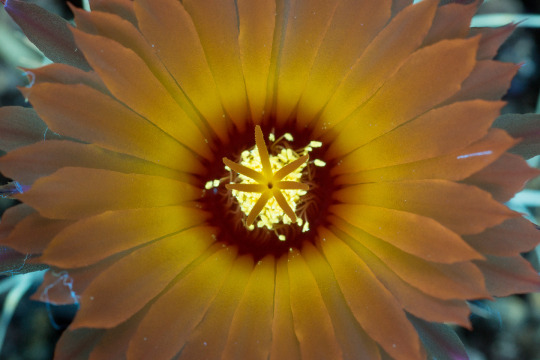
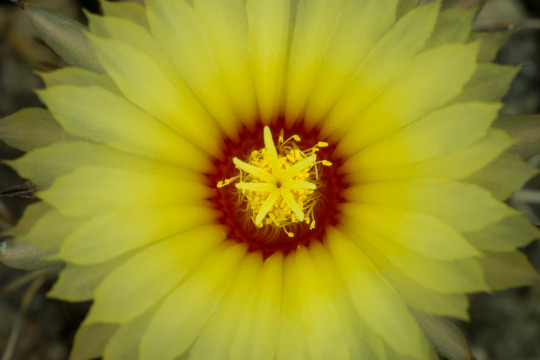
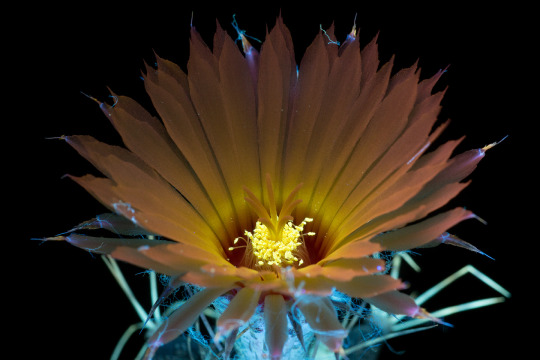


Astrophytum capricorne was the first cactus I came across at a cactus + succulent store and decided I really wanted one. The combination of curling flexible spines, pattern of fuzzy dots, but most of all the beautifully scented balloon-ribbon flowers enticed me. Native to northern Mexico they start out vaguely spherical but eventually grow into a column from which can simultaneously emerge several of these gorgeous blooms (mine has peaked at 2 now).
This is a good example of a plant where the taxonomic name meets the common name!
The genus Astrophytum means “star plant” and the specific epithet capricorne means “goat horn,” referring to the curled spines which give the cactus the common name “goat’s horn cactus.”
Remarkably, Astrophytum contains just 6 species, all of which are found in Mexico, but only one of which grows native to the U.S. For such a small genus, it is amazing that the last species to be discovered was described in 2002.
#astrophytum#cactus#cactusandsucculents#houseplants#glowing#uvivf#fluorescent#flowers#blooming#neon#ultraviolet
232 notes
·
View notes
Photo
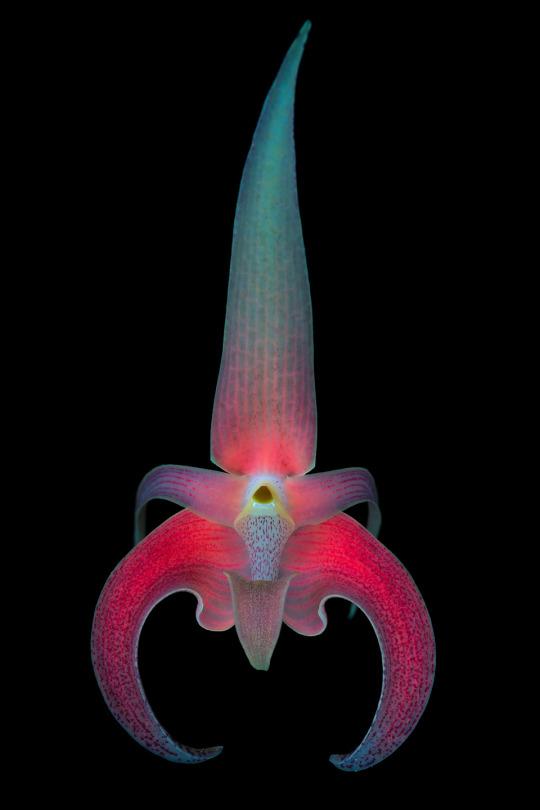
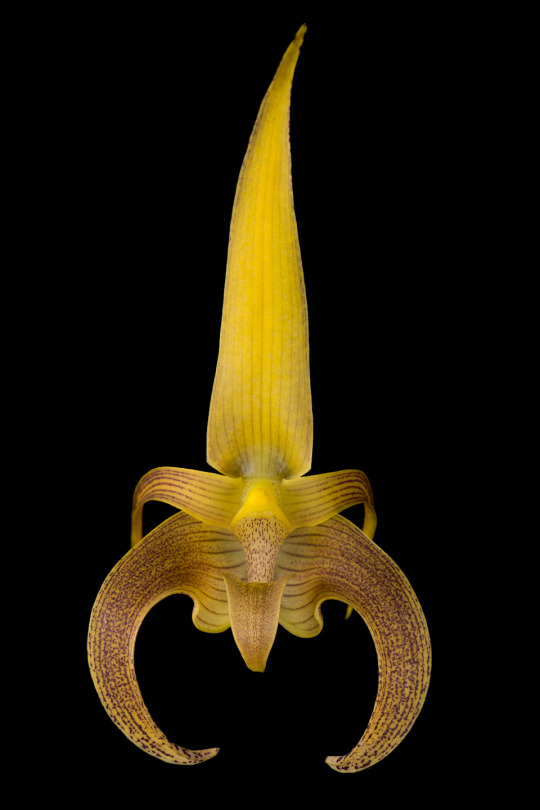


Bulbophyllum lobbii is an epiphytic orchid native to Southeast Asia, present in countries including India, Thailand, Malaysia, and Indonesia among others. The large (for a Bulbophyllum) pseudobulbs produce a single leaf and potentially one large flower. Though many Bulbophyllum are fragrant (usually stinky to attract pollinating flies) this species is considered by most to be pleasing. This Bulbo is pollinated by blowflies/bottleflies and he large central lip is hinged and wobbles with the slightest vibration, used in pollination to shove the unsuspecting bug against the column where it can receive or release pollen to the flower.
#bulbophyllum#epiphyte#epiphyticorchid#fluorescent#uvivf#glowingflower#neon#fantastic#botanicalphotography#botanical#science#beautifulscience
133 notes
·
View notes
Photo


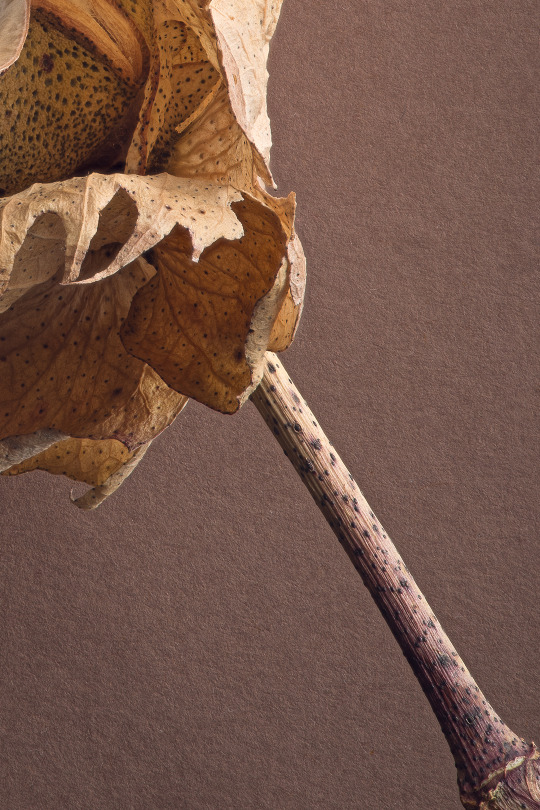
Gossypium barbadense is one of the species of cotton grown agriculturally in the modern world where it now grows throughout though it originated in Ecuador and Peru. Left to grow beyond the short cycle it sees in cultivation, this species can turn into a small and slender tree which produces showy but short-lived flowers and later bolls of cotton.
Though accounting for around 1/20 of the world’s cotton, the trade names ‘pima’ and ‘Egyptian’ cotton are well-known. Cultivars of G. barbadense are typically Long Staple or Extra Long Staple (I even created and measured staples of this boll’s fiber to check!) which allows them to make fine thread used in high thread count textiles and to create strong cord which has for one thing has been used in auto tires.
It is unlikely that this has remained a pure species as it’s been used by humans for longer than 6,000 years and cotton species in proximity can easily interbreed with one another. Some interbreeding was likely deliberate as well, considering for example that the Hawaiian cotton Gossypium tomentosum was bred with commercial species to convey disease and pest resistance.
G. barbadense has a noteworthy characteristic in having a single large and prominent extrafloral nectary on the underside of its leaves where it produces a visible (and pretty tasty) bead of nectar. These sorts of nectar sources are not intended to attract pollinators but instead usually draw in insects like ants or wasps which will defend the plant as a food source.
While many cotton species have further value for their seed oil, G. barbadense produces too much gossypol, a chemical which in its seeds which renders its oil unsuitable for consumption. Interestingly, gossypol also is known to be an antimalarial compound and has been investigated as a male contraceptive, though in the modern day is only being considered as an alternative to vasectomy.
#cotton#gossypium#barbadense#species#cultivation#agriculture#egyptian cotton#pima cotton#ethnobotany#herbarium#postfloral#carpology
53 notes
·
View notes
Photo
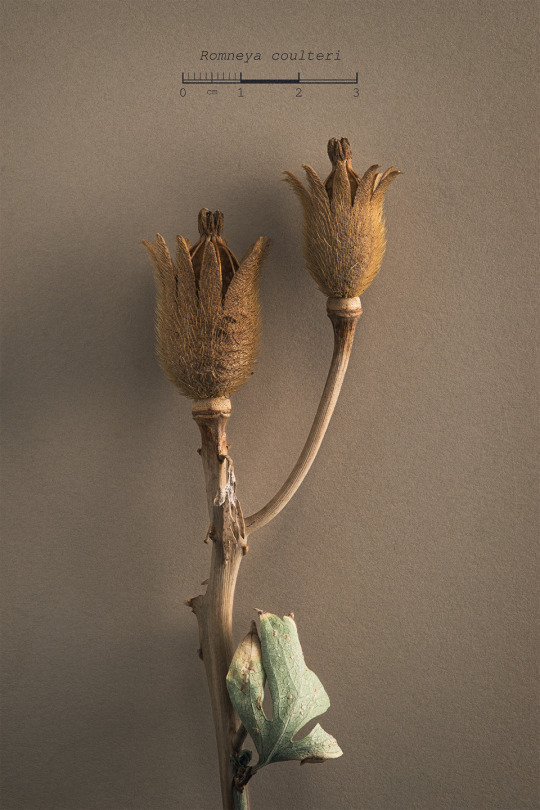
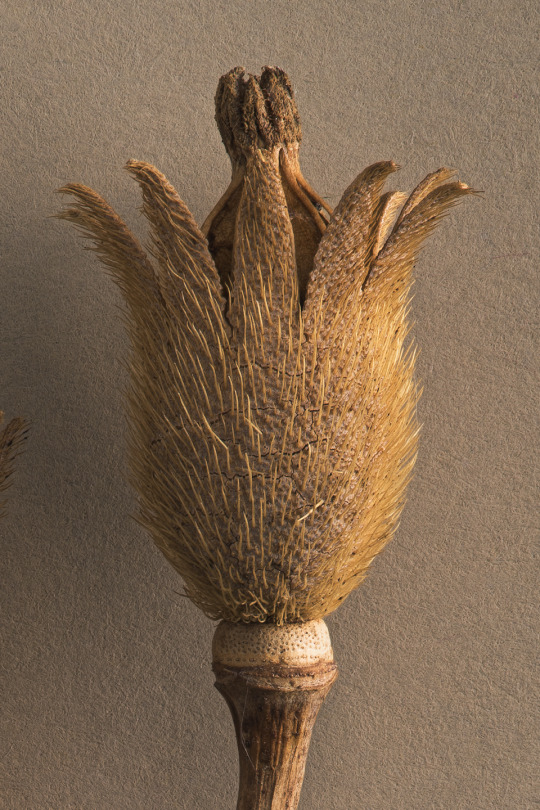

Romneya coulteri, known commonly as Matilija poppy, is a perennial from the poppy family native to southern California and Baja California where it occurs in dry regions, often hosting chaparral plant communities. It is fairly common in cultivation especially where water conservation is a concern and is known to spread aggressively via its rhizomatous roots if treated well. The white and yellow flowers are the largest of any plant native to California and was in contention to be the state flower though it was beaten out by its not-too-distant relative, the California poppy.
The fruit employs similar structures to many others in Papaveraceae (if you check my earlier post of Argemone glauca you’ll see great similarity!) but has more chambers than most, making it look like a crown. Each pod bears copious, small, classically poppyesque seeds. If you look closely you can see tiny fractures form in the capsule such that even gentle bumping or shaking can break it to pieces, spilling more of the seed that hasn’t already fallen out the top when shaken in a breeze.
75 notes
·
View notes
Photo
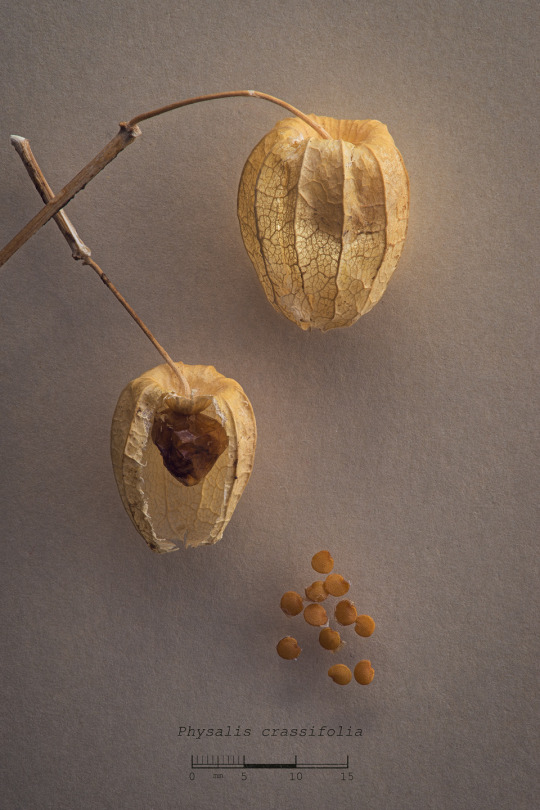
Physalis crassifolia, the thick-leaved groundcherry (crass = thick, folia = relates to the leaves) is a neat member of the nightshade family which grows in dry areas throughout the American southwest. Despite being members of Solanaceae, the fruits of Physalis are generally considered edible, and this species is no exception. Its fruit is described as “edible and sweet with pineapple and strawberry flavors” though not being fond of tomatoes, I have been reluctant to try. Each fruit grows wrapped in the papery flower calyx. This plant thrives in desert environments, with this plant seen flowering in a dry year in the Mojave Desert in California.
45 notes
·
View notes
Photo


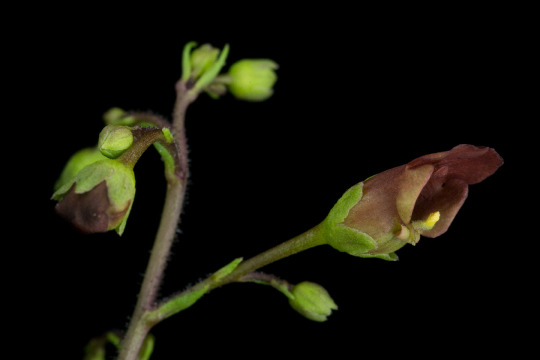


Scrophularia californica, in common name the California bee plant, is a native to - you guessed it - California! It occurs surrounding California's central valley and most frequently in southern California below the transverse ranges down into Baja California. From the order Lamiales, it can be recognized when not in bloom by its square stem and large and widely spaced tooth-edged leaves. Even when in bloom the flowers are small and easily overlooked where it grows in shade, but not by bees despite the coloration as bees do not perceive red flowers well.) Hummingbirds and small wasps are also noted visitors to the flowers and the foliage hosts several species of moth and butterfly larvae.
One quirky thing about S. californica is the flower morphology - the stigma is presented first and droops before the anthers are presented - not simultaneously. A fifth sterile stamen (staminode) is appressed to the upper surface of the tube, and from my reading, the reason for this is not yet known!
#canative#california native plants#UVIVF#glowingflowers#beeflowers#photography#botanical#biocommunication#365nm#neon
70 notes
·
View notes
Photo


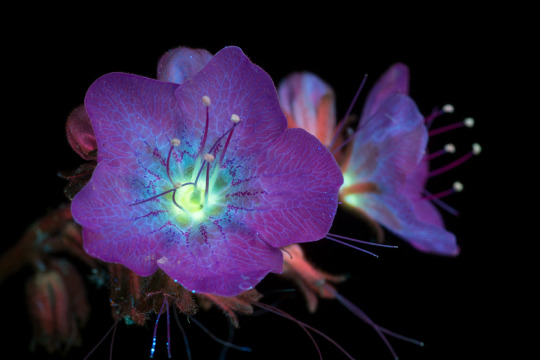
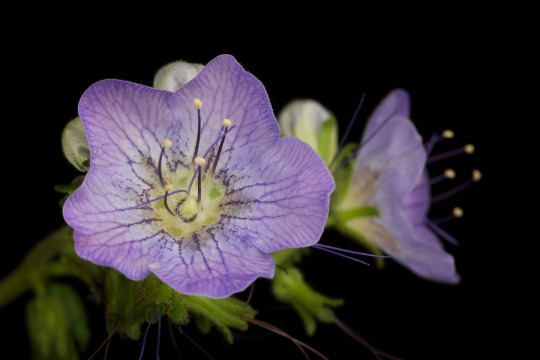

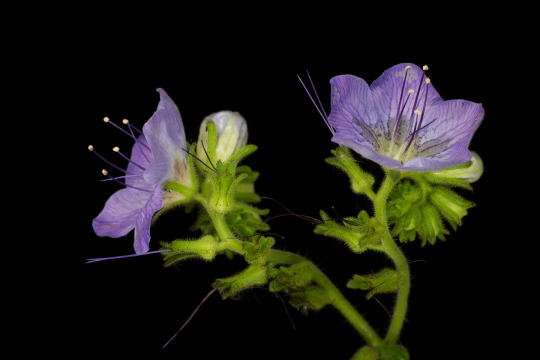
Phacelia grandiflora is from one of my favorite plant genera and is one of my favorites even from this genus. Despite how commonly it occurs through its range, P. grandiflora is limited to near-coastal regions and the south side of the Transverse Ranges through the lower third of California and a touch into Baja California. No two plants produce the same flower patterns – some deeply blue-purple, some pale, some with a dark center and pale tips. Growing up to about three feet tall, they thrive in disturbed areas and can on occasion dominate a space, though they usually coexist with other Phacelias such as P. brachyloba and P. cicutaria. The large flowers have a strange pungent odor (sweet, with a strong bias of burning rubber) and feature a prominent nectar cup. They are a favorite of native bees, particularly larger bumble bees which will make sure to pay thorough visits to each flower. The plants can produce numerous small seeds which will grow the following spring with very little water required to produce prolific and showy blooms.
#phacelia#grandiflora#boraginaceae#calflora#nativeplants#CAnative#pollinatorecology#glowingplants#uvivf#fluorescent#neon
1K notes
·
View notes
Photo

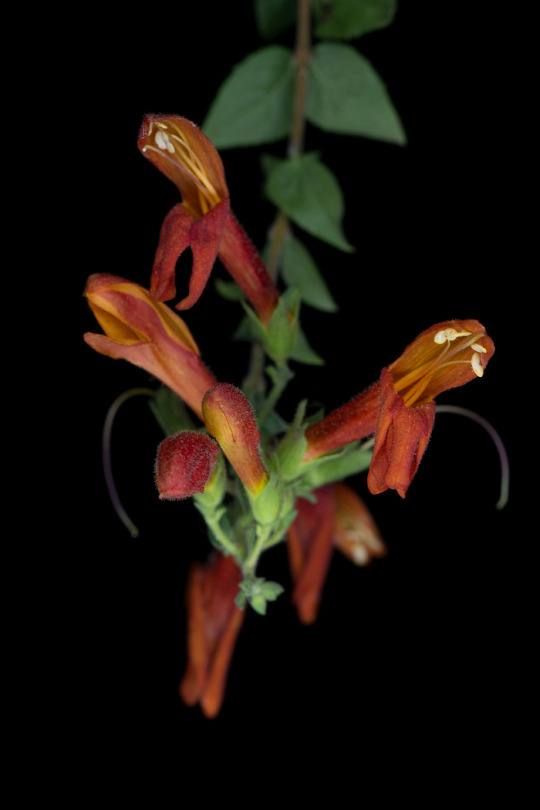

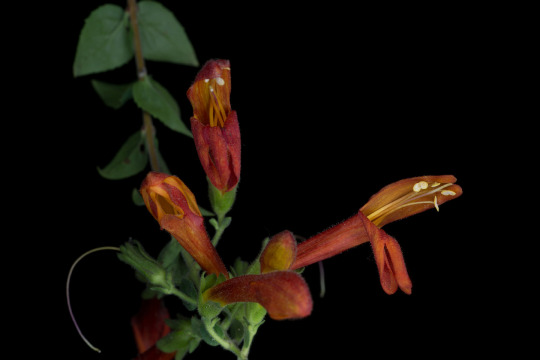

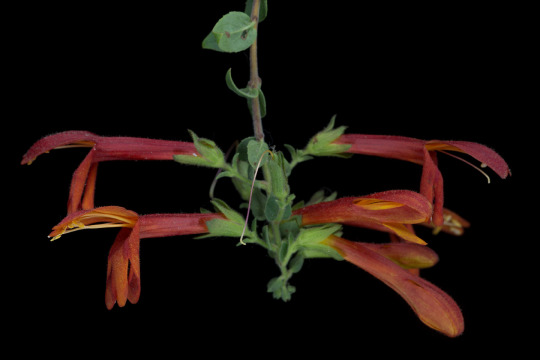
Keckiella cordifolia (heartleaf keckiella) is a climbing or draping shrub which resides in dry woodlands or chaparral habitats throughout coastal southern California and Baja California. It is perennial which enters a dormant state in summer drought and winter cold conditions if the location is severe enough. It can often be found growing out of road cuts, cliffsides, or through other plants and shrubs where the tubular red flowers spill forth at the ends of branches. The blooms typically come on in late spring through summer and persist into the hottest month of the year. The red tubular flowers are cater toward hummingbirds as their pollinators and can provide a late season nectar source.
#keckiella#penstemon#calflora#cnps#natives#nativespecies#uvivf#glowing#fluorescent#neon#luminous#photography#botanical
62 notes
·
View notes
Photo


Visiting Death Valley in 2021 was a disappointment compared to 2020, but there were some die-hard plants still flowering despite the dryness of the year. Phacelia crenulata was one of the few we saw, thriving at the edge of roads where the asphalt sheds water and can help keep it from evaporating as quickly.
Phacelia, AKA scorpionweeds for the curled inflorescences they grow, is native to North and South America though Phacelia tanacetifolia is making headway as an introduced species in Europe.
The scorpion-tail cymes of P. crenulata’s purple flowers mature into capsules full of orange-brown seeds which will hang out in the soil for as long as half a decade waiting for decent conditions to germinate and grow for a year – an endurance which may be necessary in the arid climates to which they are native. I took some seed heads home to photograph and grow, but so far I haven’t gotten them as large as they were growing even in that dry year!
59 notes
·
View notes